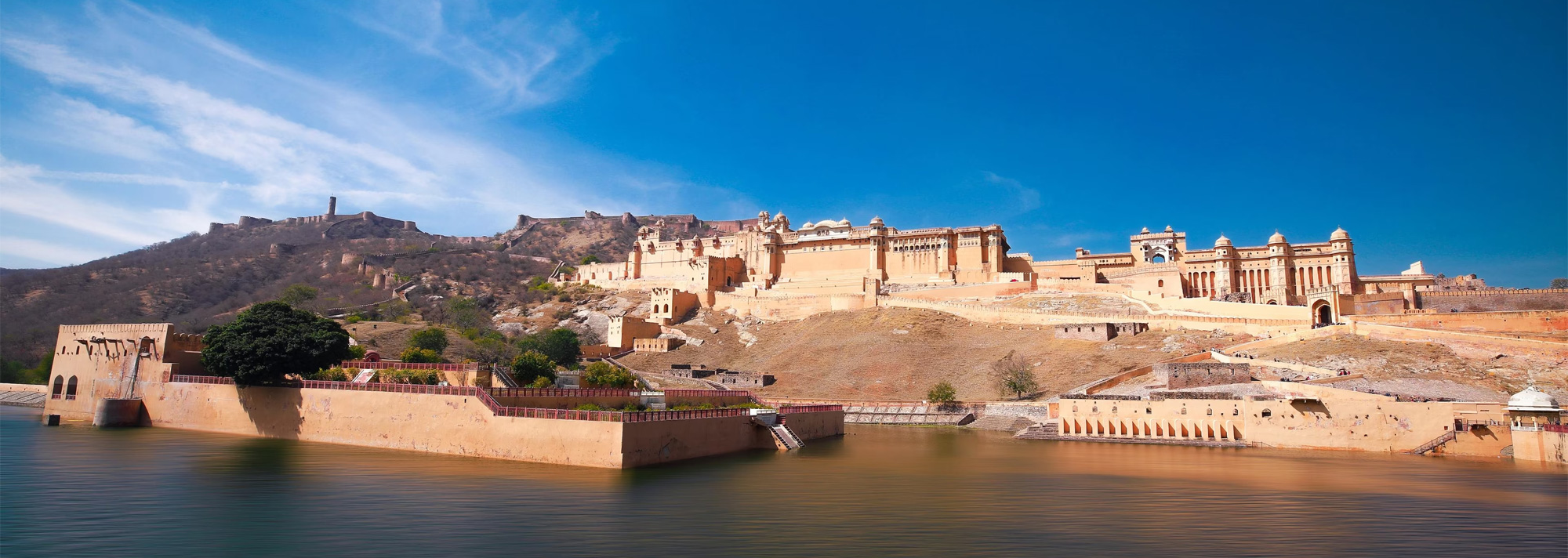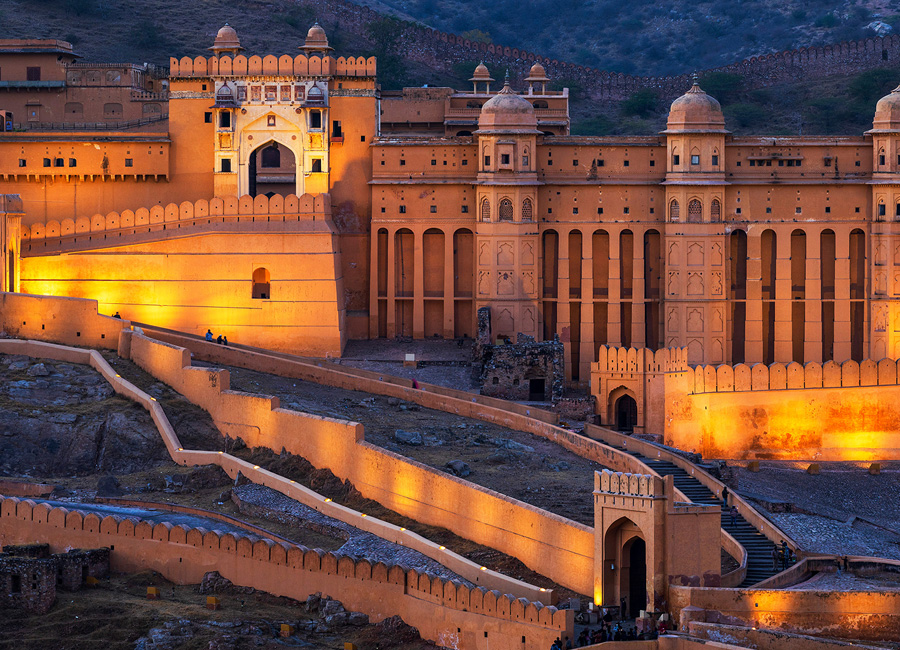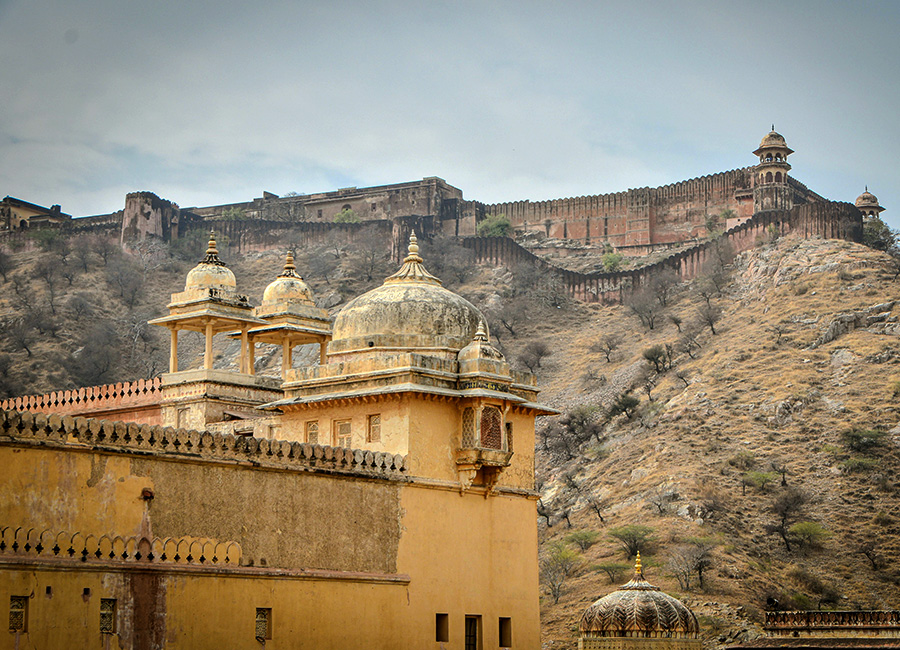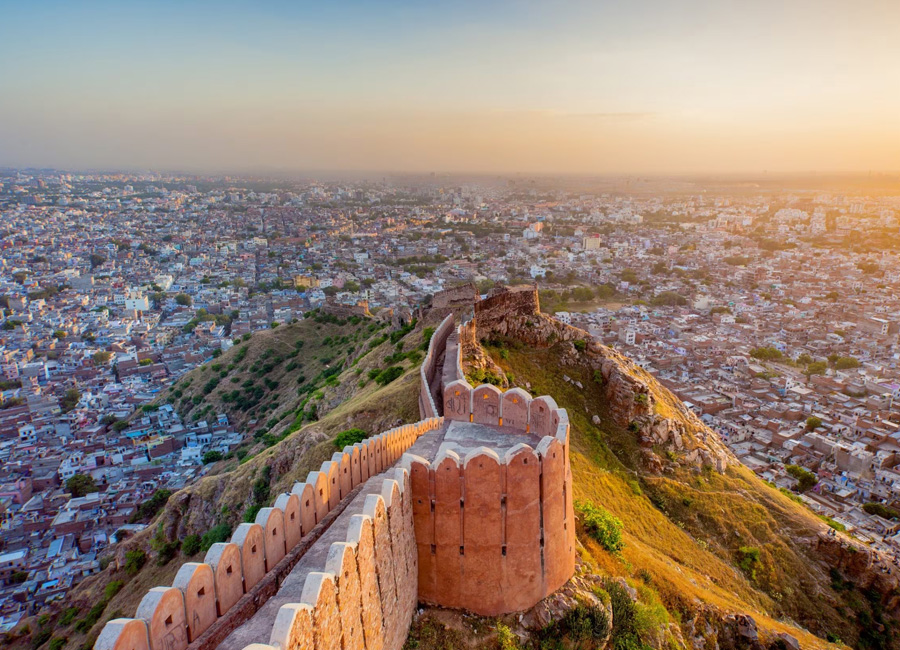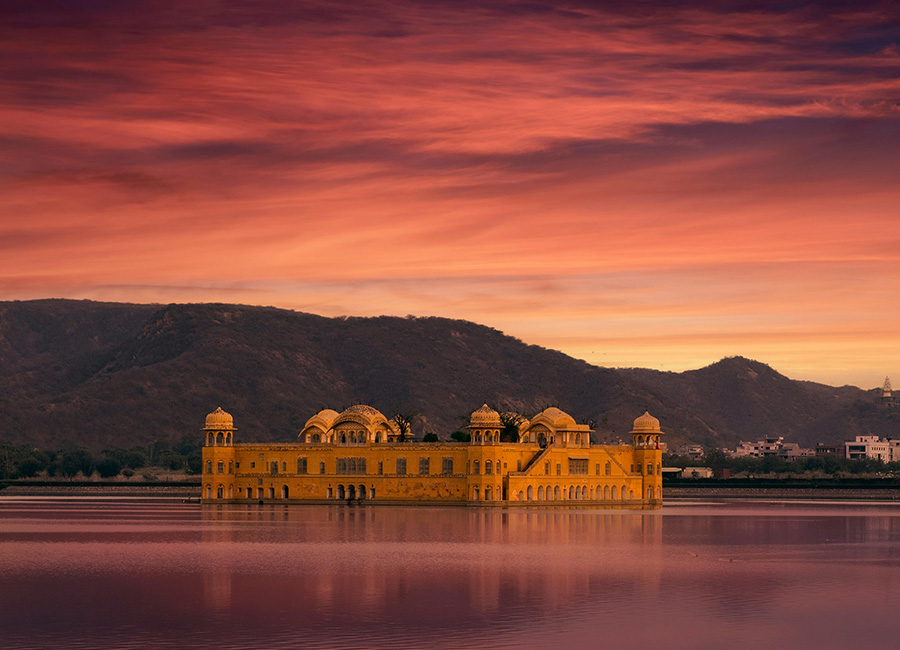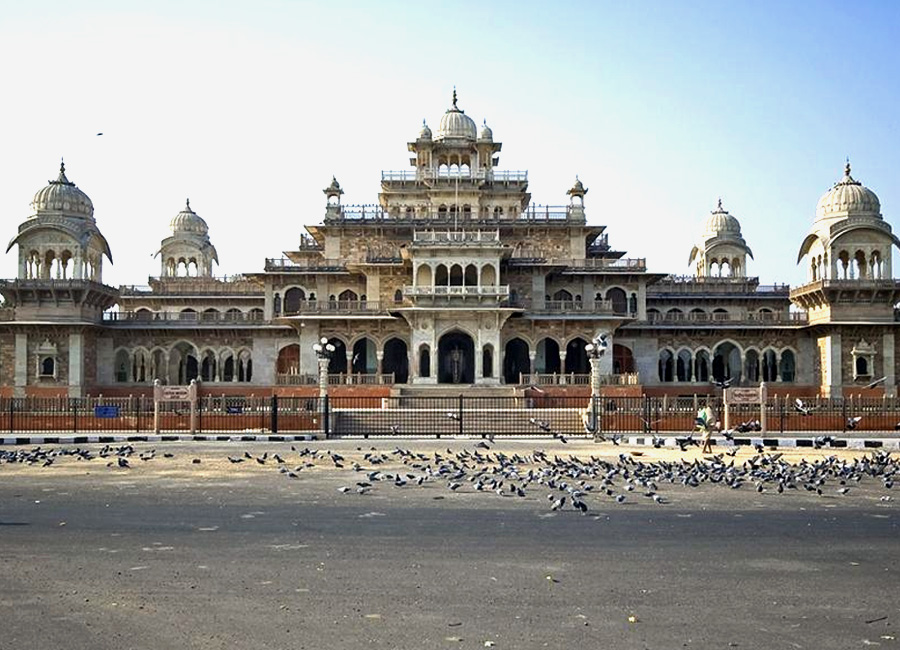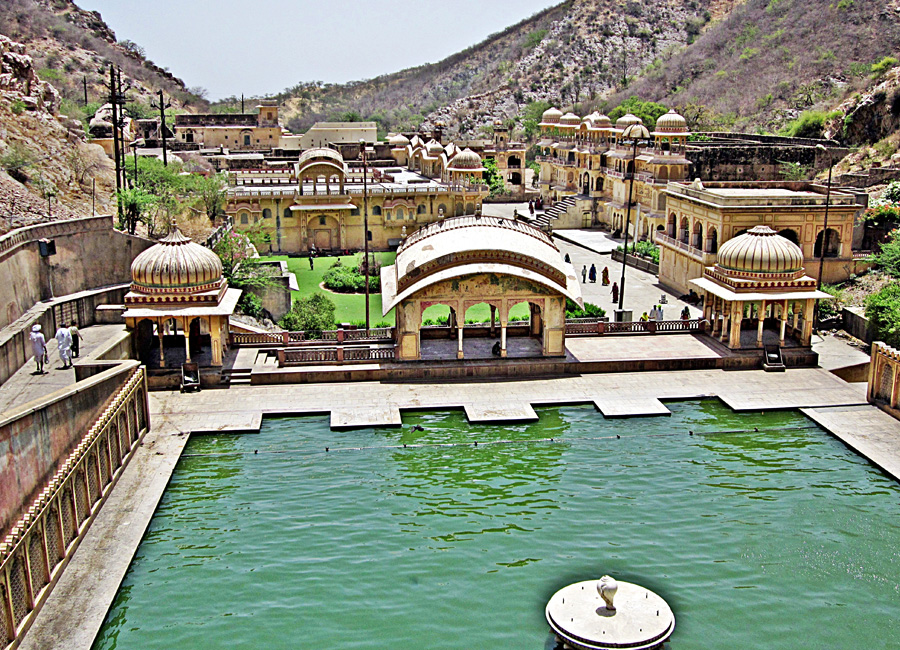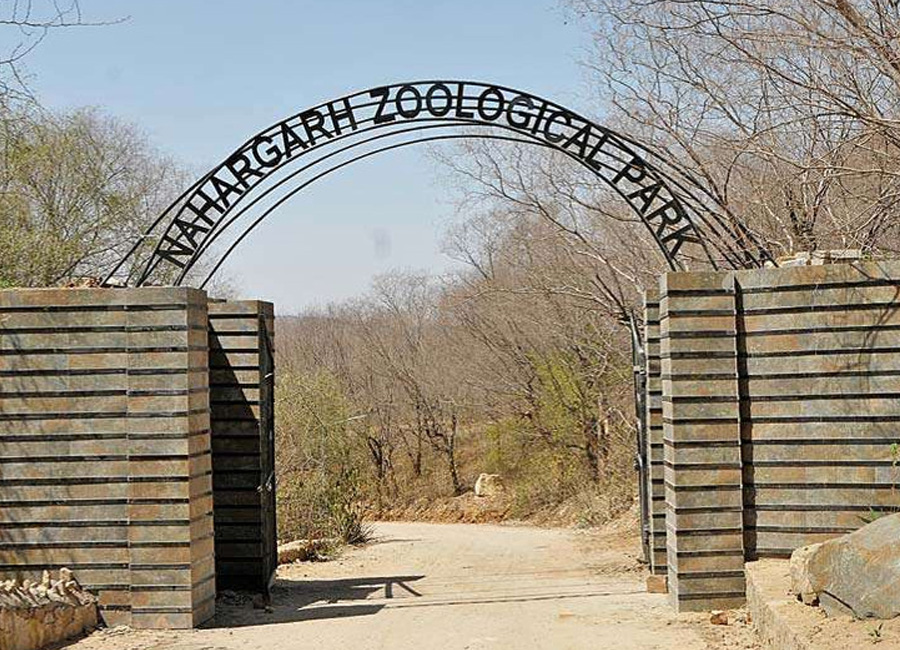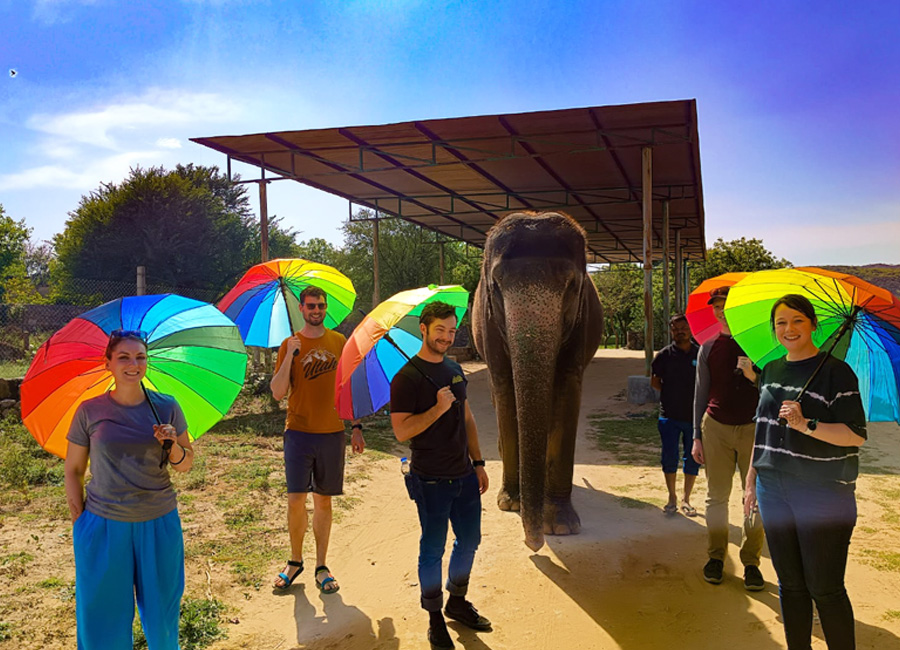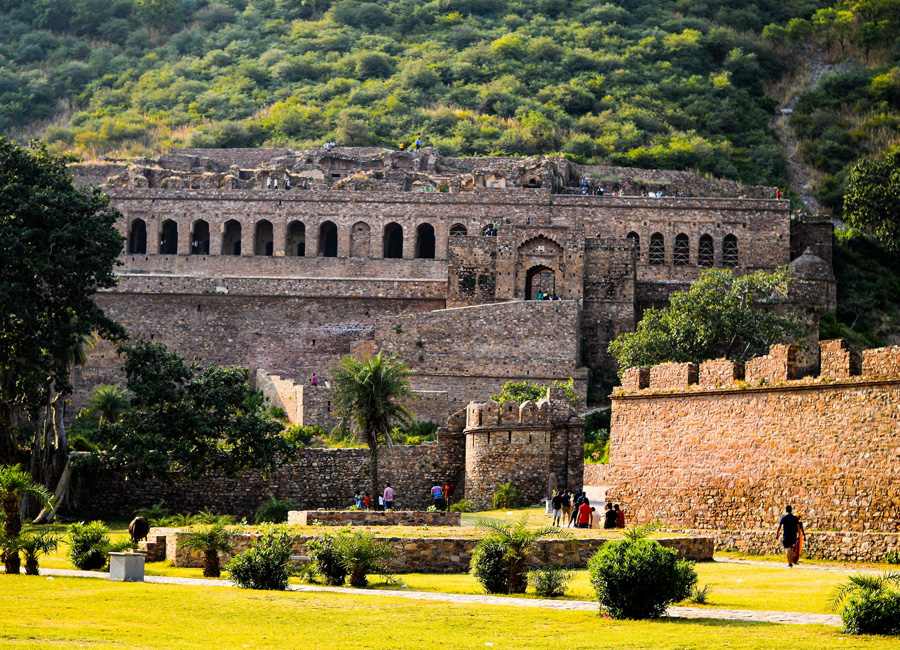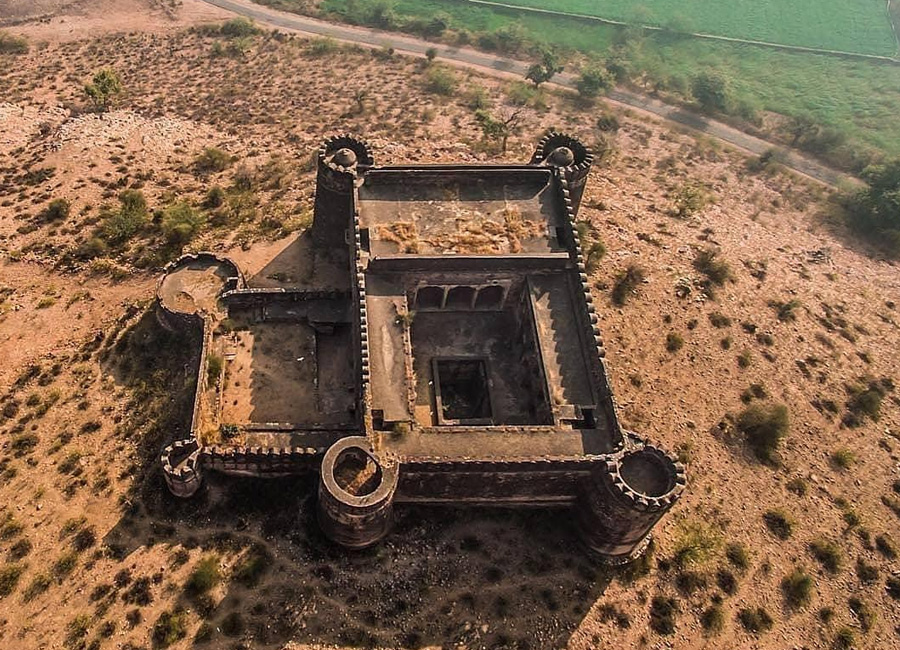Amber Fort, Jaipur
For centuries, the capital of the Kachwaha Rajput monarchs was Amber Fort (Amer Fort), a vast fort palace. Built in the sixteenth century of white marble and red sandstone, it is renowned for its elaborate carvings, expansive gardens, and hallways lined with mirrors. To have a very royal experience, you can even ride an elephant up to the fort!

